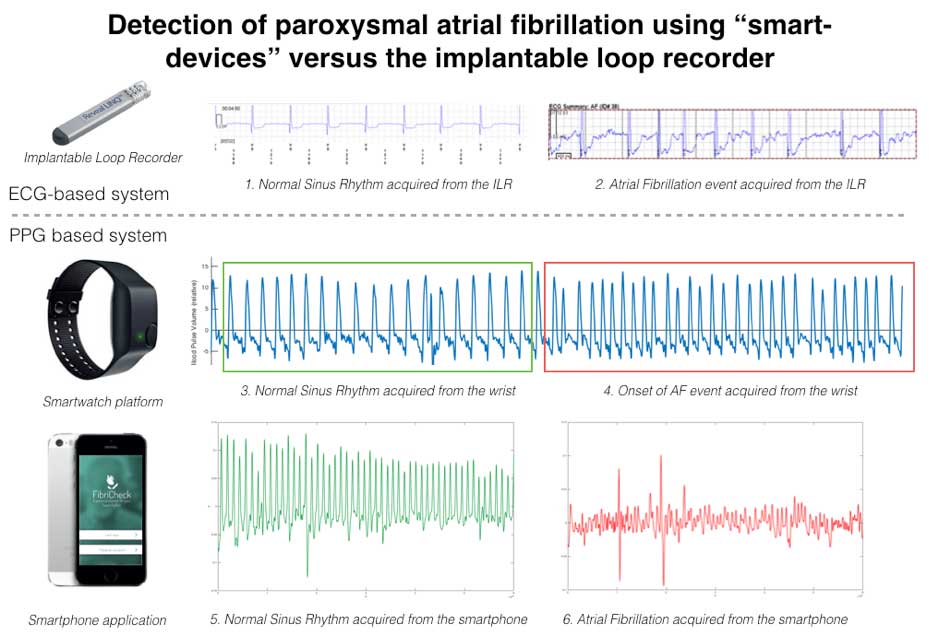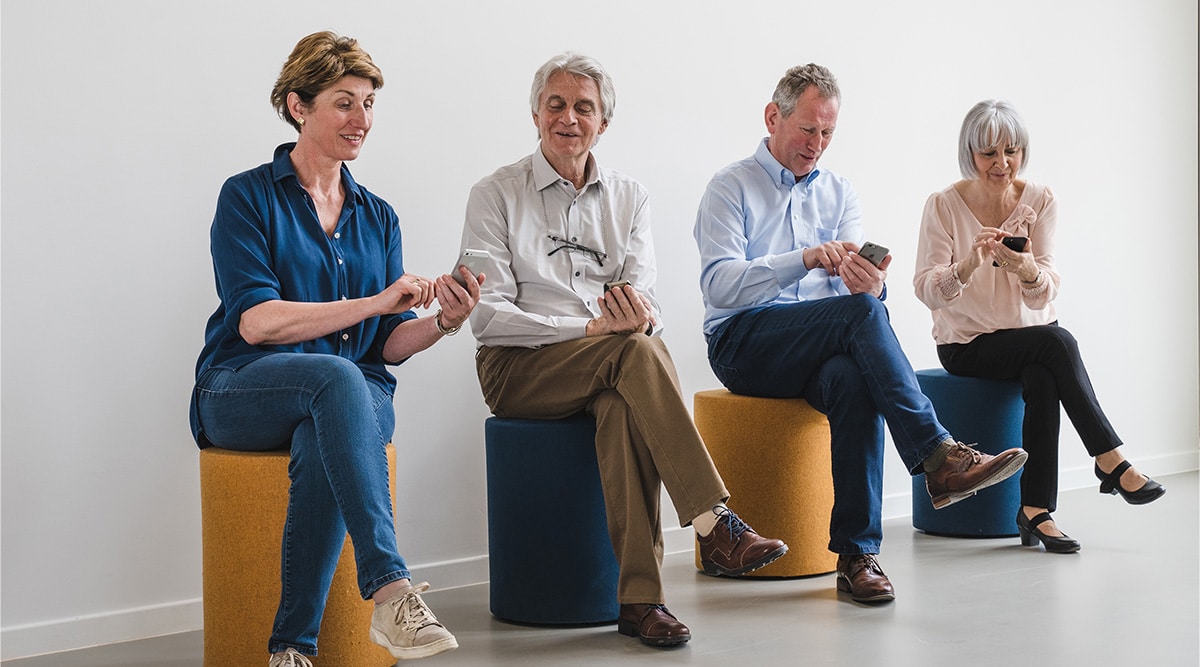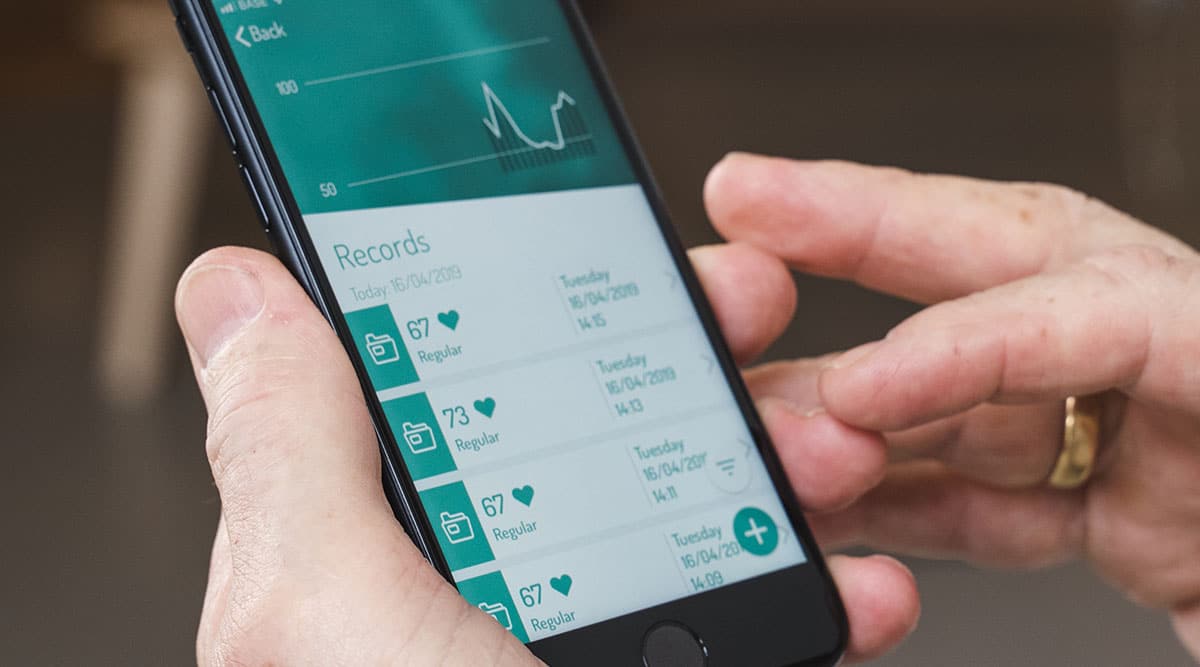Case Report
Europace Vol 19, Issue 7, July 17
Keywords:
Smartphone; Smartwatch; Atrial Fibrillation; Remote monitoring; mhealth; Photoplethysmogram
Short abstract:
We present a case where persuasive technologies were used in the detection of paroxysmal atrial fibrillation in a patient with an implantable loop recorder. A smartphone and smartwatch device were used in parallel to measure the photoplethysmogram at the finger and the wrist, respectively. The obtained results indicate a potential for these technologies in the detection of AF episodes.
Full case:
Based on the review of Carpenter and Frontera [1] we present a case of a 66-year old female patient with a history of unexplained syncope, and symptoms of palpitations which was implanted with an Implantable Loop Recorder (ILR) (LinQ, Medtronic). After the procedure the patient was provided with a smartwatch device (E4, Empatica) able to measure the photoplethysmography (PPG) signal at the wrist and an iPhone 5S smartphone with a custom-made application (FibriCheck®), able to measure the PPG signal in the tip of the finger using the smartphone camera.
She was instructed to wear the smartwatch during the nights to perform at least 7 hours of continuous measurements. After waking and removing the watch for charging, she was instructed to perform spot-check measurements (60 seconds) using a smartphone application (FibriCheck®). In total 2 recordings standard recordings were obtained per day, and additional measurements upon presentation of symptoms.
All of these measurements were performed over a period of 4 months. Overall compliance rates for the smartwatch measurements were 98% and for the smartphone measurements 107%, indicating a good adherence for long term monitoring application. In total, the ILR detected 9 episodes of paroxysmal AF with episodes ranging between 40 minutes to 3hours.
After synchronizing the data streams between the ILR, smartwatch and smartphone, all AF e

Figure 1: Overview of the results obtained using different measurement modalities on a single patient. The top panel shows an ECG-based system using the Implantable Loop Recorder. The middle panel shows the photoplethysmogram signal acquired using a smartwatch. The bottom panel represents the spot-checks performed using the FibriCheck® application, where normal sinus rhythm were observed (verified by the ILR) as well as the presence of AF during registered events.
Figure 1 shows a normal sinus rhythm as well as episodes of atrial fibrillation. The upper panel represents the ILR results with a normal sinus rhythm as well as the onset of an AF event. This onset is synchronized with the PPG signal of the smartwatch (middle panel). The bottom panel shows two measurements from a smartphone recording using the FibriCheck® application.
Despite the limitations and concerns about signal quality as indicated by Carpenter and Frontera, this case shows clearly the potential and opportunities of such technologies in the identification of Atrial Fibrillation in a noninvasive way and without the need for conventional medical hardware. Persuasive technologies such as smartphones and smartwatches provide a new potential in the detection and management of patients with AF. Opening a unique way of long-term and cost-effective case-finding initiatives. These straight-forward and low-threshold technologies will provide new insights in the long-term behavior of AF patients and have the potential to completely change the way clinicians will diagnose and manage these patients in the future.
References:
[1] A. Carpenter and A. Frontera, “Smart-watches: a potential challenger to the implantable loop recorder?,” Europace, Feb. 2016.
[2] Cerutti S, Mainardi LT, Porta A, Bianchi AM. Analysis of the dynamics of RR interval series for the detection of atrial fibrillation episodes. Computers in Cardiology, 1997. Lund, Sweden. 77-80
[3] Tatento K, Glass L. Automatic detection of atrial fibrillation using the coefficient of variation and density histograms of RR and ∆RR intervals. Medical & Biological Engineering & Computing 2001. Quevec, Canada. 39: 664-671.
Created on June 21st, 2019 at 01:22 pm
Last updated on January 6th, 2023 at 05:32 pm


